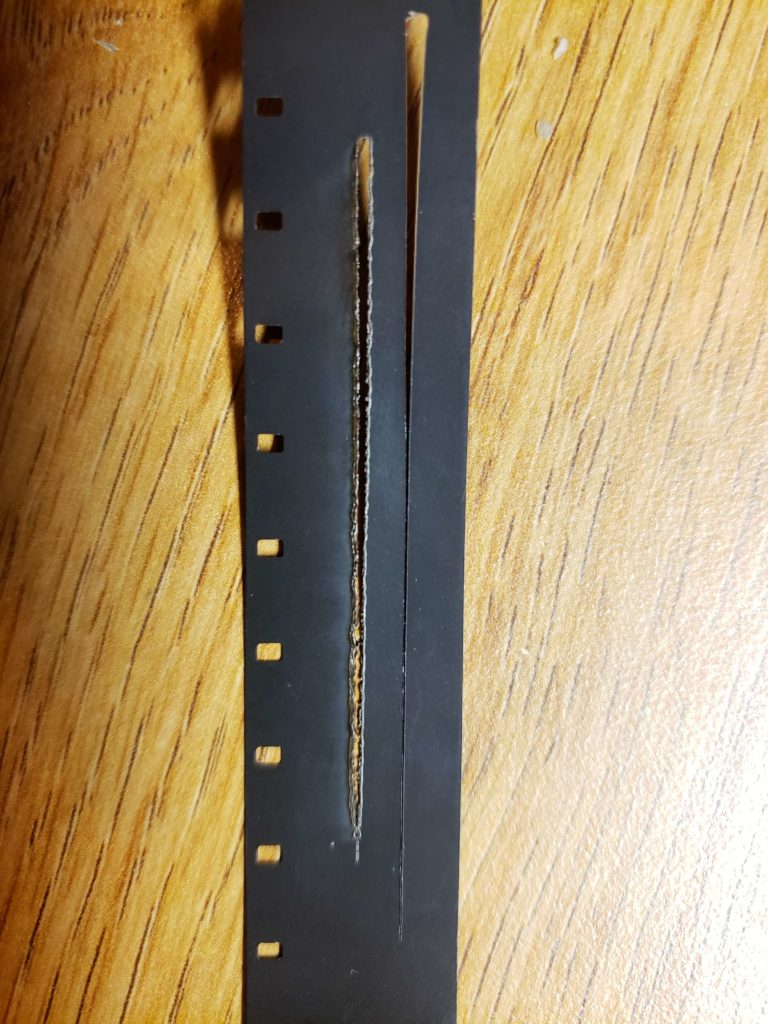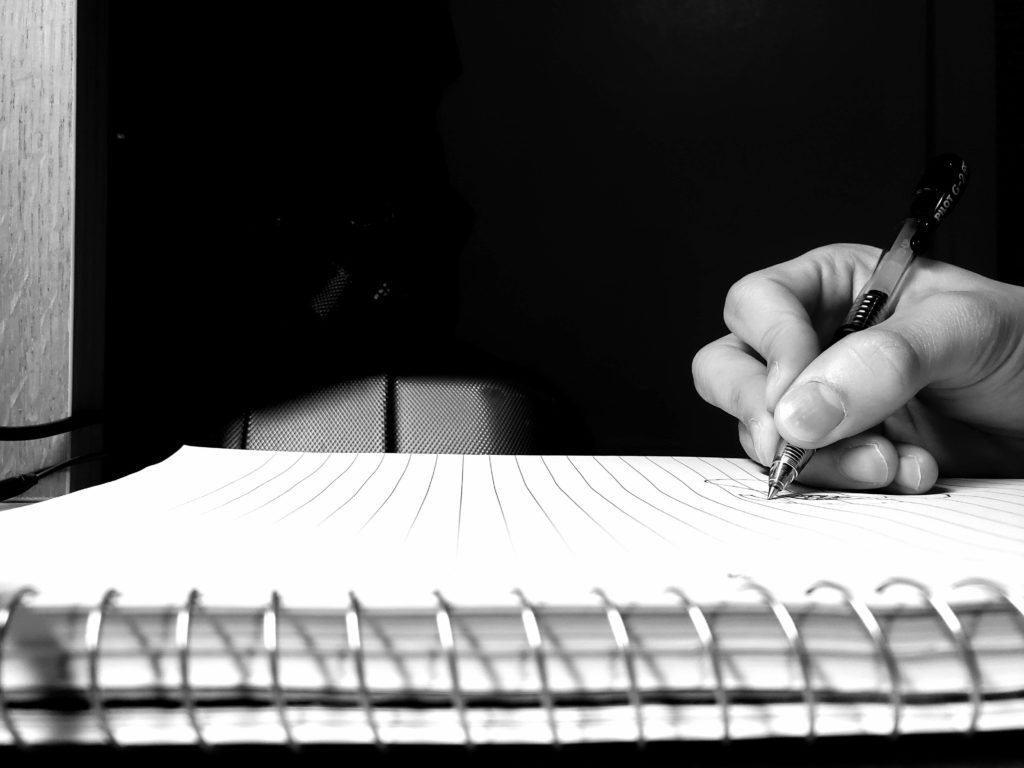By Kelvin Maestre

This winter, I took a course in Artisanal Animation. For my final, I was tasked with making an animation using any of the mediums we had studied. I was personally drawn to direct on film animation. It wasn’t the images that I was after, but the sound. The biggest inspiration for the project was Norman McLaren. McLaren was an animator for the national film board of Canada. He specialized in direct on film animation. One of his most impressive feats in the medium was being able to create his own hand drawn sound. I had made previous attempts to emulate McLaren’s process with little success. This time around, I decided I wanted to tackle the project in my own way. My initial thought was to use the laser cutter in the Makerspace, but the test ended in nothing but burnt film.
I had to consider another option. The only other machine I could use was the silhouette cameo. I was hesitant at first because I had never extensively used the machine. To my surprise, it was very easy to use making my overall process faster. Now I had the tools to etch the film, now it was time for the sound.
Sadly you can not just plop and audio file in the Silhouette cameo’s software. The cameo works best with vector based graphics, so get our sound to be cut-able we need to make it into an image file first. A quick Google search for “Sound to waveform graphic” yielded a website that does just that (link will be below). Once I had a image of my sound file, I ported it into the cameo’s software, resized the audio image, lined it up, and hit send.

I wanted to see how far I could push the technology, and so I tried to etch a stop motion animation I made of my hand. The animation was shot in black in white (easier for the software to recognize), each image was then combined into rows of 24, plopped into the cameo software, and cut. The results was imagery that didn’t reflect the source it came from. The machine had added a layer of abstraction (you can see the result at the end!)
Here is a link to a video of the film being run through a projector!
Below is a list of links I used to do this project, including a link to an in-depth guide on how to do this yourself:
